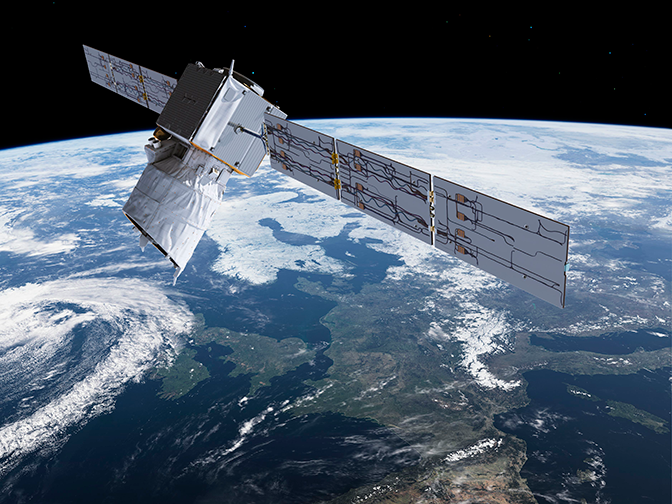The European Space Agency’s (ESA) groundbreaking new wind observation satellite is helping to improve forecasting, particularly in the southern hemisphere and tropics.
This is according to staff at the European Centre for Medium-Range Weather Forecasts (ECMWF), who have been carrying tests to assimilate the satellite data into their forecast models.
The tests show that when the satellite wind data is assimilated into the short-range forecasts they are significantly closer to other wind, temperature and humidity observations – such as aircraft, radiosonde and other satellite data – than when the data is left out. This proves to be especially true for the southern hemisphere and tropics.
The data comes from a lidar system on board ESA’s observation satellite, Aeolus, which was launched in August 2018 to test the usefulness of direct wind profile observations from space for numerical weather prediction.
The system works by measuring the backscatter of laser light from air molecules, clouds and aerosols. The data comes from a second laser on board Aeolus that was activated this summer after the first laser had lost some of its power.
“As early as 15 months after launch, ECMWF and several other numerical weather prediction centres have shown very large improvements in weather forecasts when Aeolus data is assimilated in test experiments,” said Tommaso Parrinello, the Aeolus Mission Manager at ESA. “This is a success story of close collaboration between ESA, ECMWF, other weather prediction centers and all scientists involved.”
For the satellite’s wind data to be most useful meteorologists must correct biases in the equipment on board Aeolus, the first functioning Doppler wind lidar in space.
ECMWF scientists, in close collaboration with engineers and scientists from DLR, DoRIT, ESA, KNMI and Météo-France, have been working hard to understand these biases for the last year, said ECMWF’s Mike Rennie.
According to Rennie, their work has uncovered “a strong correlation” between Aeolus wind data biases and “small temperature variations across the 1.5m diameter telescope used in the Aeolus instrument.”
ECMWF will work closely with ESA on ways to minimize these biases in Aeolus products, said Rennie.



